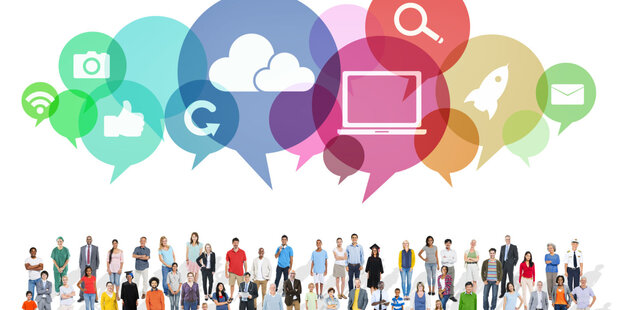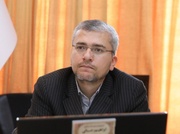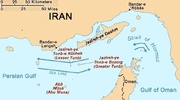Agree or not, we are now citizens of another type of world, we are real people in a space which has no border and very little limits and this fact makes it hard for parents more than any other group to control their children, who should learn ethical and legal codes for living in the cyberspace.
In 2012, the digital analyst Brian Solis defined Generation C as the "Connected Consumer." He pointed out that anyone who integrates technology into their daily routine, regardless of age, shares certain qualities.
Depending on whom you talk to, the "C" in Gen C can refer to everything from "collaboration" to "community," "computerized," and "content." At the most fundamental level, however, I like to think that Gen C stands for connectivity.
Keep in mind that Gen C is not considered as an age group at all and it includes people who are not merely online--they're active and engaged in online communities, from the familiar social networks to product review sites.
The digital transformation--and all the cultural changes that have accompanied this upswing in connectivity.
However the point is that for members Gen C, which includes children and young adults, web and cyberspace interactions are the main reliable sources.
But what could parents do to deal with this problem? The answer is media literacy. This competency can save lives of our children.
Media literacy is the ability to identify different types of media and understand the messages they're sending. Kids are bombarded with text messages, memes, viral videos, social media, video games and advertising take in a huge amount of information from a wide array of sources, far beyond the traditional media.
However all the media have a common point, someone create the content for some reason. As a responsible parent you should understand the reason and teach your child to understand it as well. This is the basis for media literacy.
Interestingly enough, it is not very much related to your technical literacy but a behavioral competency.
Teach your kid not to accept whatever they hear
She should learn to think critically in order to save her life from fake news, people and even events. The characteristic of cyberspace is that everybody can create any content and this make it very hard to recognize between good and bad. The point of view of the creator is very important. The recognition of this fact, makes it easy for the users to see the content in the appropriate context.
Do not label with right or wrong
Aside from your ethical values, define cyberspace as a place to share and interact ideas and beliefs. Do not restrict the ideas of your kid by making her to judge about every fact and categorizing it by good and bad.
A smart customer
One of the aims to content creation is marketing. This makes it necessary to analyze a content, which our children face in social media as a customer and know about the marketing tricks.
You cannot teach media literacy to children
Teaching media literacy as sit-down lesson is not applicable. You should incorporate with your kid in her everyday life activities. For little kids you can talk about commercials on TV, packages of her toys and food. Analyze it and ask her about what she thinks and what happens. With older one you can discuss viral and news that you see on social media.
According to a statistics released by the education ministry, about 20 million internet users out of 56 million users are below 18 in Iran.
A survey conducted by the ICT ministry revealed that only eight percent of Iranian parents monitor their children’s online activity.
The survey revealed that Iran is not very successful in content creation for children and to control children’s online activity.
Internet and users in Iran
As we mentioned, Generation C has not any limitation in age. According to a report released by the Statistical Center of Iran released a report on cultural behavior of Iranian families on the Iranian year calendar 1396 (March 2017- March 2018).
From 60,341,046 of people above 15 years old, a total of 53 percent, 31,978,910, are members of different social media.
According to the statistics, 94.5 percent are members of Telegram, 43.1 percent are members of Instagram and 34.3 percent are members of whatsApp. Imo (4.7 percent), Facebook (3.8 percent), Google Plus (2.4 percent) and Twitter (1 percent) are on the bottom of the list.
Iranians spend an average of one hour and four minutes in the social media. Tehran Province is on the top with one hour and 31 minutes followed by Hormozgan Province with one hour and 18 minutes and Gilan Province with one hour and 11 minutes. On the bottom of the list is Sistan-Baluchistan Province with 32 minutes.
Media Literacy Index 2018: Common sense wanted
According to the Open Society Institute Sofia, the Northwestern European countries have the highest potential for resilience to the impact of fake news due to the quality of education, free media and high trust among people. At the other extreme are the Balkan countries, which would be more vulnerable to the negative influence of fake news and the “post-truth” phenomenon mainly because of controlled media, deficiencies in education and the low level of trust among people.
These are the findings of a new edition of the Media Literacy Index by the European Policies Initiative (EuPI) of the Open Society Institute – Sofia. The index assesses the resilience potential to fake news in 35 European countries, using indicators for media freedom, education and trust in people.
According to the Index 2018 findings, the countries which are better equipped to deal with the impact of post-truth and fake news are the countries from Northwestern Europe – the Scandinavian states as well as the Netherlands, Estonia and Ireland. This coincides with the conclusions of other surveys and experts opinions, which single out these countries in regard to their capacity to tackle fake news. The countries with the lowest results are in Southeastern Europe – from Croatia to Turkey – along with their immediate neighbors Hungary and Cyprus. As a rule, the reasons for these results are the poor or mediocre performance in education as well as the controlled (not free) media. Such countries are most likely to be vulnerable to fake news and the ensuing negative effects.
Bottom line
As you see, behavioral competence is necessary for children to deal with cyberspace in daily life. Teach children to think critically to promise a future world full of interaction and authentic news and facts. Cyberspace is a part of today world, a big part which cannot be ignored!
MNA/TT



























Your Comment